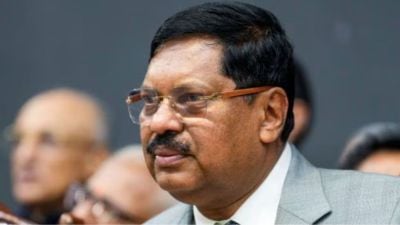When Big Business sends cricket to a higher pitch
It was a figure that set tongues wagging, had accountants drooling and the rest of the sporting world looking on in envy. Rs 100 crore over ...

It was a figure that set tongues wagging, had accountants drooling and the rest of the sporting world looking on in envy. Rs 100 crore over five years, Rs 20 crore a year, and the promise of more, for playing cricket.
Okay, there’s only one Sachin Tendulkar — who signed this deal with WorldTel last year — but the cricketing and corporate worlds are becoming more closely associated than ever before. And the result is Big, Very Big, Money.
‘‘Paagal hai kya’’ was the market reaction to the WorldTel deal. Mark Mascarenhas, the WorldTel chief, himself wasn’t sure at that stage how or when or if he’d get back the money invested but he did say one thing: ‘‘I couldn’t have let Tendulkar go.’’
|
Who pays what
|
||
|
PEPSI Compared to cricketers, filmstar Kareena Kapoor gets about Rs 3 crore per year, Amitabh Bachchan charges Rs 6-7 cr per year while Shahrukh Khan is the highest paid of them, charging upwards of Rs 8-10 per year. Most of the filmstars are paid for advertisement per campaign. SAMSUNG |
||
A single deal had made Tendulkar the richest cricketer in the world, and then some. Other than the Rs 100 crore WorldTel pays him upfront (in yearly instalments), Tendulkar gets a percentage of his advertising deals and bonuses from the sponsors too. With sponsors still in the queue, it could all add up to Rs 25 crore a year.
Now, what can Tendulkar hope to get as his match and logo fees from the BCCI? If he plays 10 Tests and 30 ODIs in a year, at Rs 5 lakh per Test and Rs 1 lakh per ODI, the gross is around Rs 80 lakhs a year. After taxes — which cricketers have been paying since 1999 — he’ll end up with around Rs 50 lakh or so. That’s 2 per cent of his earnings through sponsorships/endorsements etc.
Mascarenhas’s foresight, though he has his share of critics, led the way for corporate sponsorhip to change the nature of cricket. A junior member of the national squad can make a crore or so annually through individual sponsorships, a middle-level player about Rs 2-5 crore and top players like Saurav Ganguly and Rahul Dravid can go upto Rs 7-8 a year. For Sachin, of course, the sky’s the limit.
LG jumped on to the bandwagon in the last World Cup, and says it’s been paid rich dividends in terms of product sales and brand recall. It now has a $30 million deal with the ICC till 2007 and, says a senior company official, ‘‘would have gone ahead till 2015 if ICC had agreed to do so’’.
Hero Honda’s been around longer; since 1991, when it sponsored the Hero Cup. The money it’s spending on next year’s World Cup (of which it is a sponsor) is a part of its regular advertising budget. Cricket fits the products’ image perfectly; says senior vice-president (Marketing) Atul Sobti, ‘‘Our target consumer is Indian male between the age group of 18 to 40 and cricket is no doubt the most watched programme by them.’’
‘‘Cricket sponsorship is heavy on our budget’’, says Dipak Jolly, vice-president (Corporate Communications), Pepsi. ‘‘But as long as Pepsi is getting the mileage, we are happy.’’
And so they should be. Pepsi is a major player on the cricket field; it will remain one of ICC’s global commercial partners till 2007, having paid a big amount for sponsorship of ICC events. According to Pepsi sources, top cricketers like Tendulkar or Ganguly earn a little less than top filmstars.
But unlike the filmstars, whose commercial interests are watched by their personal managers, cricketers are guided by their agents or agencies. They act as an interface between players and sponsors and ensure that the player meets the appearances and requirements of the sponsors. These players have to enter strict legal contracts specifying appearances, penalties for breaking contract etc and the agents could charge as much as 20-25% of the contracted fees from players.
Jolly says: ‘‘From the corporate point of view, we can’t run after cricketers for time and other details. There could be a cricketer or two who deals directly with us, most come through agents.’’
Lokesh Sharma, managing director of 21st Century Media (which manages Dravid) explains his role. ‘‘The players aren’t aware of the legal hassles, or the market requirements, so the agents guide them. Also, no cricketer has time to run after companies. An agent can approach the compan on his behalf and see which profile matches their requirement. He can regulate the contract on the behalf of a cricketer, help him with billing.’’
Similarly, Percept D’Mark have Ganguly, Yuvraj Singh and Zaheer Khan as their exclusive players. Like other agencies, Percept operate on commissions — from clients or players. According to CEO Sanjay Lal, CEO of the agency, ‘‘In case of an exclusive player we get about 15 to 20 per cent of the deal money from the player while in case of a non-exclusive player, we get the commission (same percentage) from the sponsor.’’
IMG’s deal with the BCCI is similar to WorldTel’s with Tendulkar. IMG won the team sponsor rights, which they resold to Sahara. According to sources, Sahara pays IMG around Rs 50 lakh per Test and Rs 43 lakh per ODI. In turn IMG gives the BCCI Rs 45 lakh per Test and Rs 40 lakh per ODI. The difference is their profit.
That, it seems, is the bottomline. And it’s delivering, every time.
Photos


- 01
- 02
- 03
- 04
- 05





























